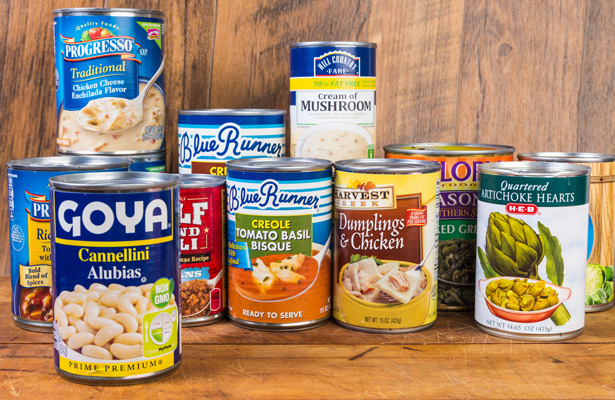
After last month’s derecho, emergency preparedness is at the top of many Iowans’ minds. While there are many things to consider when preparing for an emergency or disaster, one important aspect to think about is how you will obtain and keep food and water safe.
Before an emergency:
- Obtain enough food and water to last your household at least 3-7 days.
- Your emergency food supply should include foods that are non-perishable, meaning they have a long shelf-life and don’t require refrigeration.
- In case of power outages, disruption in gas service, or unsafe water, choose foods that need minimal preparation or water.
- Consider any dietary needs when selecting food for an emergency supply. For example, if you normally follow a Cardiac or Heart Healthy diet, choose canned goods that are lower in sodium.
Examples of foods to keep on hand during an emergency include:
- Canned meats, vegetables, and fruits that require no further cooking
- Dry cereal
- Peanut Butter
- Non-perishable pasteurized milk
- Protein or granola bars
- Dried fruit and nuts
- Prepare to have at least one gallon of water per day for each person in your household. You may need more water per day if you have special dietary needs. Keep in mind that during warmer months, you may want to have more water on hand to ensure adequate hydration if an emergency were to occur.
- Consider keeping disposable cups, plates, and utensils on hand in case you are unable to safely wash dishes. Make sure you have a can opener to open any canned goods.
- To maximize the shelf-life of your food and water supply, store in a cool, dark, and dry location. Keep your food and water off of the floor to protect it in the event of a flood.
- Check your emergency food supply at least every six months. Review expiration dates on food and water. Use food and water before it expires, but be sure to replace it in your supply.
- If you have any pets, be sure to include them when preparing your emergency food and water supply.
- Purchase appliance thermometers for your fridge and freezer if you don’t already have them. If the power goes out, you can use these thermometers to ensure your food is being stored safely—your fridge should be at 40°F or lower and your freezer should be at 0°F or lower.
- Keep ice cubes, ice packs, or frozen containers of water in your freezer to help keep food cool in case of a power outage. Purchase a cooler if you don’t already have one and know where you can get ice for your cooler if needed.
During an emergency:
- Avoid opening the fridge and freezer doors when the power is out. An unopened fridge can be kept cold for approximately four hours. An unopened freezer can be kept cold for approximately 48 hours (or 24 hours if it is half-full).
- If you are going to consume food from your fridge or freezer during a power outage, utilize fridge and freezer thermometers to determine if food is being kept at a safe temperature prior to consumption. If perishable food is above 40°F for one or more hours, throw it away. Perishable food that is not stored at the proper temperature has a higher risk of causing foodborne illness. Examples of perishable foods include: meat, fish, eggs, dairy products, and leftovers.
- If you anticipate the power to be out longer than a couple hours, utilize your cooler and ice. Perishable foods are most important to be moved from the fridge to the cooler. Ensure ice is fully surrounding cooler contents. Use a food thermometer to periodically check the internal temperature of food to ensure it is staying at 40°F or below. Change ice as needed, but remember to throw away any perishable food that is above 40°F for one or more hours. If you anticipate the power to be out longer than a day or two, prepare to move food from your freezer to a cooler as well.
- In cooler weather, do not place food or water outside during a power outage. The temperature outside is not always consistent, and food may become contaminated by the conditions outdoors (i.e. pests and rodents).
After an emergency:
- When the power comes back on, check the thermometers in your fridge and freezer. Refrigerated food should still be safe if the fridge was shut and the power was out for no more than 4 hours. However, if perishable food in the refrigerator reached greater than 40°F for one or more hours, throw it out. If the freezer temperature reads 40°F or less when the power turns back on, the food is safe.
- Always inspect food prior to consumption. Discard any food or water with abnormal odors, colors, and textures. Do not consume any food or water that has come in contact with floodwater. Remember… when in doubt, throw it out!